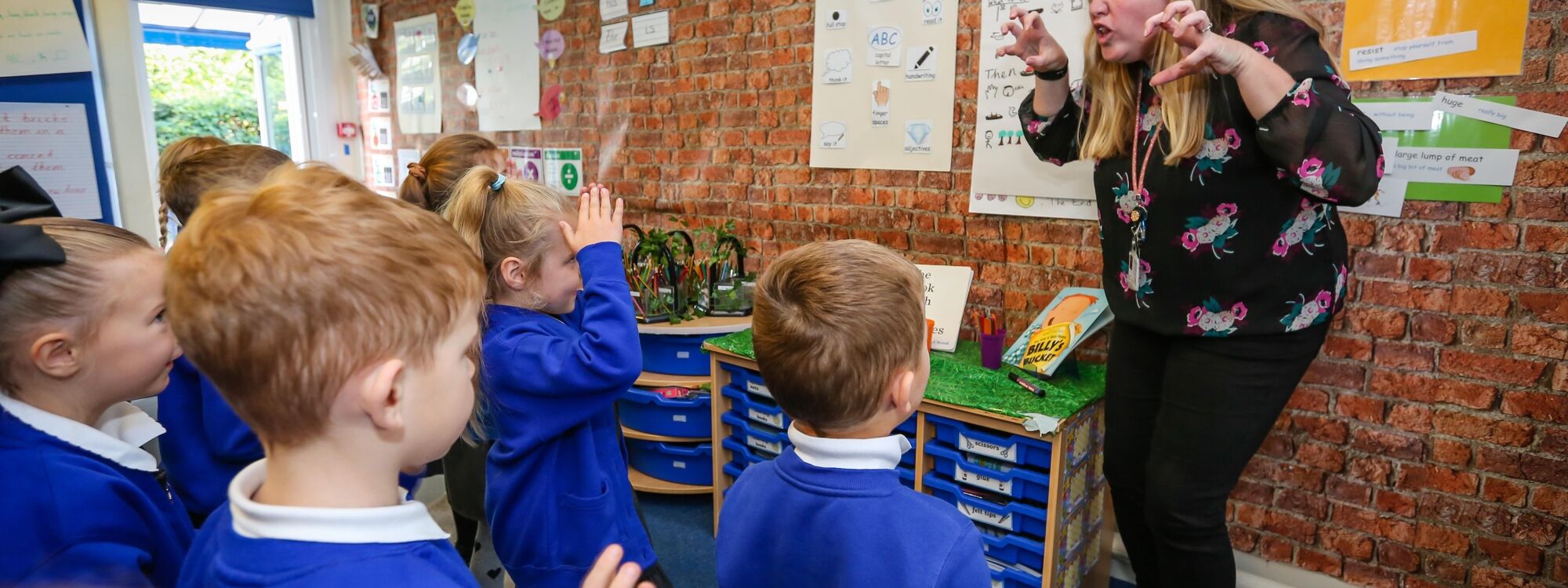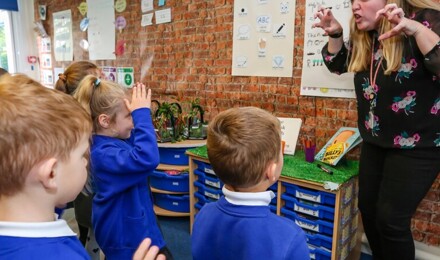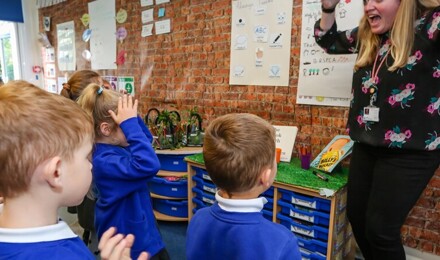Writing
Front Lawn Primary Academy is a storytelling school. We use Talk for Writing to teach our children. We believe that ‘Imitation is the first step towards mastery and that writers find their literary voice through replicating the voice and style of other writers. The easiest way to learn anything is to do it the way a master does.’
(Andy Griffiths, Mark Burns)
Talk for Writing enables children to imitate the key language they need for a particular topic orally before they try reading and analysing it. We teach all of our English through fun activities that help them rehearse the tune of the language they need, followed by shared writing to show them how to craft their writing. This enables them to choose the writer tools they want to use in their independent writing, which in turn helps them to develop their own literacy voice. All of our writing is taught with a clear audience and purpose in mind.
In T4W there are 3 Stages.
Stage 1: Imitation - Undertake a rigorous apprenticeship under a master in the field
Once the teacher has established a creative context and an engaging start, a typical
Talk-for-Writing unit would begin with some drama or writing activities to help children internalise the pattern of the language required. This is then followed by ‘talking’ an exemplar text (model text), supported visually by a text map and physical movements to help the children recall the story or nonfiction piece. In this way, the children hear the text, say it for themselves and enjoy it before seeing it written down. Once they have internalised the language of the text, they are in a position to read the text and start to think about the key ingredients that help to make it work. This stage could include a range of reading as-a-reader and reading as-a-writer activities.
Understanding the structure of the text is easy if you use the boxing-up technique and then help the children to analyse the features that have helped to make the text work. In this way the class starts to co-construct a toolkit for this type of text so that they can talk about the ingredients themselves – a key stage in internalising the toolkit in their heads. Whilst internalising the toolkit, children have the opportunity to see how these tools could be used to create a focused piece of short burst writing with the support of the teacher as a model. During this time, teachers will also work with the children to set ‘tickable targets’ which focus on aspects that they need to attend to.
Stage 2: Innovation—Absorb the hidden knowledge that comes from experience and struggle
Once the children have internalised the text, they are then ready to start innovating on
the pattern of the text. This could begin with more advanced activities to get the children
thinking about the key words and phrases of the focus text so the children can magpie ideas. Younger children and less confident writers alter their text maps and orally rehearse what they want to say, creating their own version. More confident writers use the boxing up to plan new texts. The key activity in this stage is shared writing, helping the children to write their own
by “doing one together” first. This could begin with using a boxed-up grid (innovating on the exemplar plan) to show how to plan the text and then turning the plan into writing. This allows the children to see how you can innovate on the exemplar text and select words and phrases that really work.
Demonstrating how to regularly read your work aloud to see if it works is important here.
This process enables the children to write their own versions through developing their ability to generate good words and phrases and also, hopefully, develops the inner judge when they start to decide why one word or phrase is best. If, during this process a teaching assistant (or in KS2 an able child) flip-charts up words and phrases suggested, these can be put on the washing line alongside the shared writing so when the children come to write they have models and words and phrases to support them. Throughout the shared writing, the children should be strengthening the toolkit so they start to understand the type of ingredients that may help. Once they have finished their own paragraph/s children should be encouraged to swap their work with a response partner. Then with the aid of a visualiser, the whole class can also discuss some of the more successful work. Time now needs to be found to enable the children to give their own work a polish in the light of these discussions and perhaps to begin the dialogue about what works by writing their own comment on their work for the teacher to comment on. Self assessing against the toolkit is an effective way for children to edit and improve their own work.
Stage 3: Moving from innovation to independent application - Surpass the master in brilliance and rewrite the rules to your own advantage
The teacher now has the opportunity to assess the children’s work and to adapt their planning in the light of what the children can actually do. This stage could begin with some activities focused on helping the children understand aspects that they were having difficulty with and should include time for the children to have a go at altering their work in the light of what they have just learnt so that they start to make progress. This stage will continue to focus on the next steps needed to support progress so the children can become independent speakers and writers of this type of text. Additional examples of the text are compared followed by more shared writing on a related topic and then the children can have a go themselves on a related topic of their own choosing. This process also helps the children internalise the toolkit for such writing so that it becomes a practical flexible toolkit in the head rather than a list to be looked at and blindly followed. At the end of the unit, the children’s work should be published or displayed. The teacher will now have a good picture of what features to focus on in the next unit to move the children forward.
English lessons will introduce subject content progressively and constantly demand more of pupils. The English curriculum has been planned carefully to ensure both clear progression from Year R to Year 6 and clear progression within each unit of work taught. Each unit of work builds on prior learning (See curriculum maps). Models of excellence, that include classic texts, are used to constantly broaden children’s exposure to high quality literature and mastery of grammar.
Teachers will:
- Check pupils’ understanding systematically and effectively in lessons, offering clearly directed and timely support.
- Give pupils time to apply their knowledge and understanding in new ways that stretches their thinking in a wide range of subjects, and to practise key skills
- All T4W units begin with an assessment (cold task) that shows what they can do.
Teacher’s then highlight each child’s next steps and ensure their planning allows for children to be taught the specific skills they need to ensure they make progress (AfL).
- Mark children’s work daily so that they know how they are progressing with their next steps and when they have met them. A dialogue builds up between each child and their teacher and all misconceptions are addressed.
- Model knowledge, skills and language in every session taught. During stage 3 of T4W (Independent Application), children have the opportunity to write across the curriculum connecting learning across disciplines to deepen understanding.
Pupils will:
- Develop the capacity to learn from mistakes and become keen learners who want to find out more. Most are willing to find out new information to develop, consolidate and deepen their knowledge, understanding and skills, both in lessons and in extra-curricular activities
- Commit to improving their work.
- Be engaged in their learning and display enjoyment in the learning process. Pupils books identify progress over time and across a unit of work. Pupils take pride in their work as evidenced through their presentation and the amount of work they produce.
- Describe what they need to do next to achieve and succeed and collaborate well with peers, supporting each other's learning.
Click here for an example of planning:



